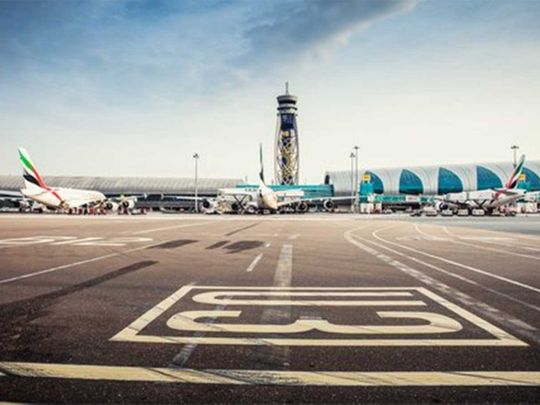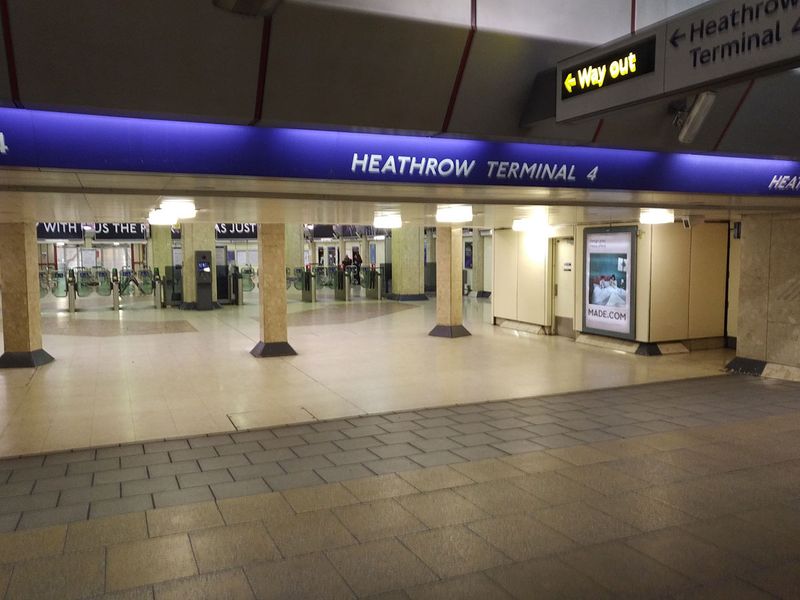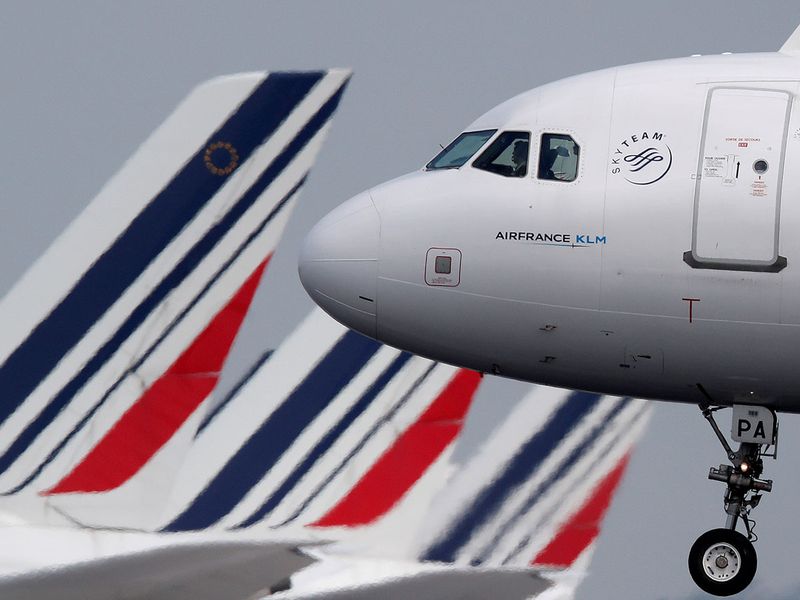COVID-19 impact: Air travel in future ‘will be as enjoyable as open-heart surgery’

Dubai and London: For as long as most of us can remember, air travel hasn't been a whole lot of fun.
As airlines crawl out of virus-lockdown mode, passengers can expect it to be even more of a bummer, with new temperature check points, lines of distancing people stretching into the parking lot, and plexiglass barriers isolating baggage clerks, baristas, and other staffers.
Face masks and gloves will be de rigueur, disinfectants will be everywhere, and even though many processes will be automated to minimize human interaction, industry officials predict travel times will have to increase to accommodate the hygiene-inspired precautions.
"Going through an airport, the whole travel experience, will be as enjoyable as open-heart surgery," says Paul Griffiths, CEOof Dubai Airports, whose workers wear disposable gowns and safety visors that wouldn't look out of place in a COVID-19 ward.
As governments draw up plans to get the world flying again, proposals aimed at keeping passengers safe are often confusing and contradictory - for instance keeping people from sitting next to each other at the departure gate but cramming them six or eight abreast for hours during a flight. And if implemented long-term, executives say they could do almost as much damage to airline and airport profits as remaining closed altogether.
The 2-metre rule can be a stretch
Keeping 400 people - the capacity of many jumbo-jets - two meters from one another "means a queue of close to a kilometer, which fills up the departure hall and out into the car park," says John Holland-Kaye, CEO of London's Heathrow airport.
Enforcing a two-meter rule could reduce the airport's capacity to 20 per cent of its usual level, he says. "That's not something we can keep doing until a vaccine comes along."
Instead, Holland-Kaye says airports would do better to screen passengers for COVID-19 at the terminal entrance. Heathrow, Europe's busiest hub, is testing a thermal detection system intended to identify people with the virus, technology that's been used in Asia for years. The UK government, though, has yet to endorse it.

Make best use of space available
At Frankfurt airport, Europe's fourth-busiest, check-in counters, baggage-claim areas, and boarding-pass and security checkpoints have been redesigned to ensure people stay at least 1.5 meters apart, with markings on the floor indicating the required distance. Hundreds of posters and digital displays promote distancing, the PA system lights up every five minutes in multiple languages with announcements on distancing rules, and trained agents walk the halls to enforce them.
Disinfectant dispensers are ubiquitous, and plastic shields have been installed anywhere staff interact with customers.
"We've put in place a good package of measures to reduce the risk of getting infected," Matthias Zieschang, chief financial officer of Fraport AG, the operator of the Frankfurt airport, said.
At Amsterdam Schiphol, Europe's No. 3 hub, every second check-in desk and departure gate is closed to minimize mixing, and at baggage claim each flight gets its own belt.
Munich has installed a vending machine dispensing masks, sanitary wipes, and disposable gloves. Helsinki airport, a major crossroads for travel between Europe and Asia, provides masks for anyone who doesn't have one and requires people meeting arriving passengers to stay in their cars or wait in a deserted terminal building that has been idled.
Spray it down
At Charles de Gaulle airport in Paris, alternating seats are blocked off. Cleaning staff spray the terminals with disinfectants every night, and the elevator floors are marked to ensure distancing"-allowing just three people in a spacious cabin.
At a pharmacy, there's a mannequin wearing a mask and visor in addition to an inflatable neck pillow. And the airport is testing new Chinese-made machines that can check the temperatures of 16 people per second as they leave baggage claim. Passengers with a fever will be pulled aside and given the option of seeing the airport's medical personnel and a rapid COVID-19 diagnostic test.
"If they refuse, that's their choice," says Edward Arkwright, deputy CEO of Aeroports de Paris. "We're counting on individual freedom and a sense of responsibility. The aim is to put in place measures that will instill confidence so everyone feels they can travel safely."

Not possible in the air
What's not feasible, airlines say, is blocking off rows of seats aboard aircraft to maintain distancing at 38,000 feet. Such a move would do little to contain the virus while hammering profits at airlines, the International Air Transport Association says. With middle rows removed, single-aisle jets would fly no more than two-thirds full, whereas 70 per cent is needed just to breakeven, according to the trade group.
De facto distancing will happen anyway, says Jozsef Varadi, CEO of low-cost carrier Wizz Air, because few people are likely to book seats once airlines start to expand their schedules again. He says he has no plans to limit the number of passengers. Some travelers, though, are already complaining that carriers are letting planes get too full.
"Airlines are in the business of delivering passenger health and safety, but also economic efficiency," Varadi says. "We are not structurally looking to get rid of physical seats."
Instead, carriers expect protective equipment, disinfectants, and restrictions on movement to keep the virus from spreading. Varadi says his customers will need to cover their faces throughout the journey. Crew will don masks and gloves, meal service will be minimal, and contactless cards will be needed for any purchases.
There will be no in-flight magazines or catalogs, and planes will be disinfected with an antiviral fog between trips. And low-cost giant Ryanair Holdings Plc says it will require passengers to make a special request to use the toilet to prevent queuing in the aisles.
Self-checks
Some airports are placing their hopes on a system that combines screening with certificates showing that the holder is either free of the disease or has had it and is immune, as well as contract-tracing that will allow cases to be tracked should a flare-up occur.
Vienna airport lets arriving passengers avoid a 14-day government quarantine by undergoing a molecular-biological test in a facility near the airport. Departing passengers who are tested can get a document proving they're virus-free to present to officials upon landing. But the test must be booked days in advance, takes about three hours for results, and at 190 euros costs more than many flights.
For Dubai Airports chief Griffiths, it all adds up to a pressing need for a vaccine. While the emergency measures being introduced may help boost passenger confidence, he says they're not sustainable either for companies or the traveling public.
"This crisis is unlike anything we've ever seen in the aviation business," he says. "We're dealing with a monster."

Comments